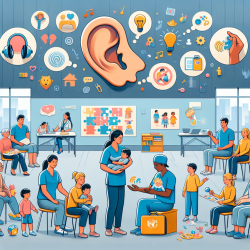Introduction
Stroke remains a leading cause of disability worldwide, with acute ischemic strokes (AIS) posing significant challenges for healthcare providers. The Stroke Outcome Optimization Project (SOOP) offers new insights into improving stroke recovery outcomes through comprehensive data analysis. This blog explores how practitioners can leverage these findings to enhance patient care and encourages further research in this critical area.
Understanding the SOOP Study
The SOOP study, conducted at a comprehensive stroke center, involves a large dataset of MRI scans and clinical data from 1,715 individuals, including 1,461 acute ischemic stroke cases. By utilizing machine learning algorithms, the study aims to predict stroke severity and outcomes using the NIH Stroke Scale (NIHSS) as a primary measure.
Key findings indicate that machine learning can effectively utilize imaging data to predict stroke severity, offering a benchmark for future research. The dataset's diversity helps avoid overfitting, ensuring that predictions are applicable across various populations.
Practical Applications for Practitioners
Practitioners can enhance their clinical practice by integrating the following insights from the SOOP study:
- Data-Driven Decision Making: Utilize machine learning models to predict patient outcomes, aiding in personalized treatment planning.
- Comprehensive Assessments: Incorporate multiple assessment tools, such as NIHSS and Modified Rankin Scale (mRS), to provide a holistic view of patient recovery.
- Focus on Prognostic Models: Develop and validate clinical predictive models (CPMs) to forecast long-term recovery and guide rehabilitation strategies.
Encouraging Further Research
The SOOP study underscores the importance of large, diverse datasets in advancing stroke research. Practitioners are encouraged to engage in further research to refine predictive models and explore new avenues for improving stroke care. Collaboration with data sharing consortia can enhance the development of robust algorithms and foster innovation in stroke rehabilitation.
Conclusion
By embracing data-driven approaches and leveraging comprehensive datasets like SOOP, practitioners can significantly improve stroke recovery outcomes. The integration of machine learning and clinical data offers a promising pathway for personalized care and enhanced rehabilitation strategies.
To read the original research paper, please follow this link: The stroke outcome optimization project: Acute ischemic strokes from a comprehensive stroke center.










